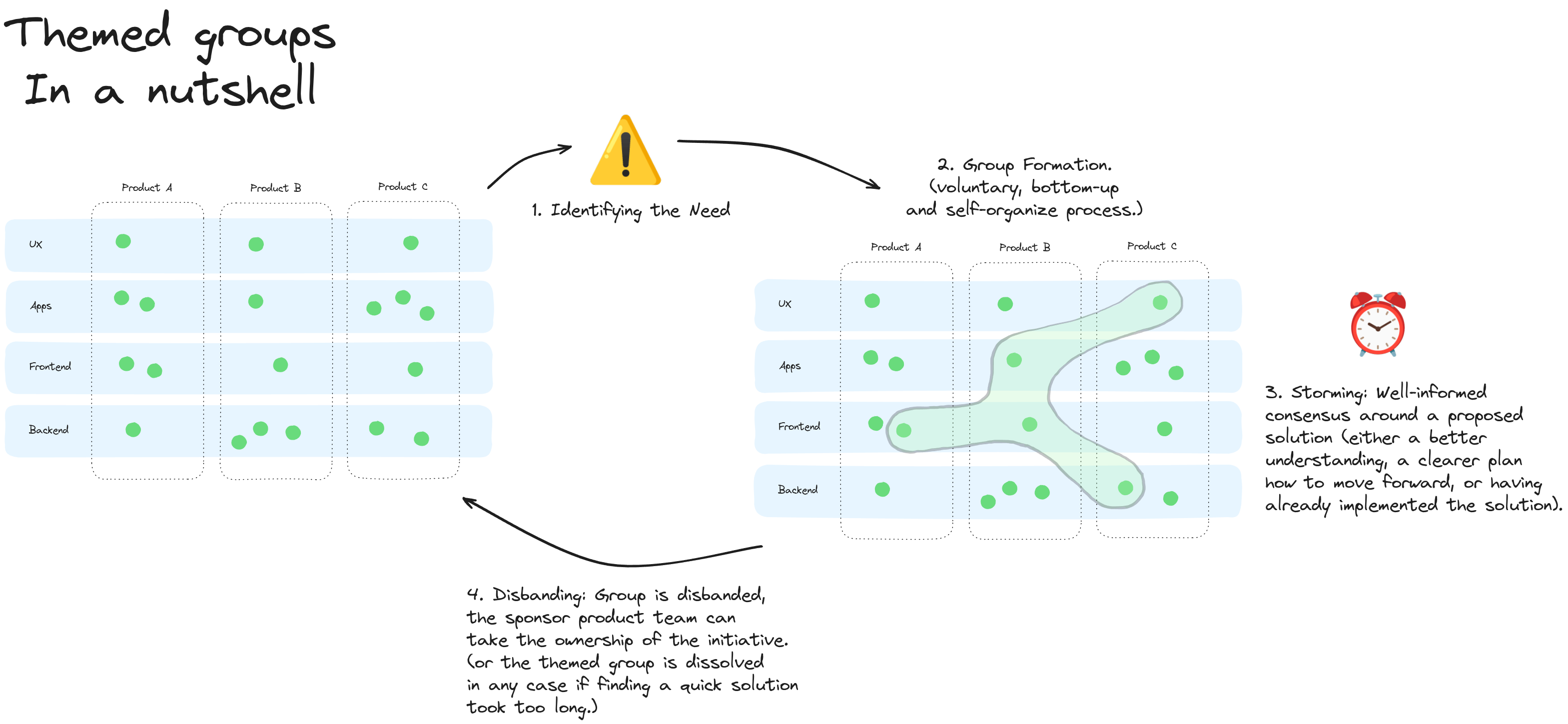Themed Groups: In a Nutshell
The approach of Themed Groups briefly explained.
The full article of the approach is available here: Themed Groups: A dynamic way to respond to real and timely needs.
Essence
Themed Groups are dynamic, cross-functional teams formed in full autonomy to address specific, timely needs within an organization. Unlike traditional static communities, these groups are temporary, diverse, and outcome-focused, and disbanded once their goals are met.
Themed Groups are lightweight and purely optional, their adoption do not require the current organization structure to change: they are a thin layer of a structure that appears and disappears strategically, when the needs of the moment would require it.
Themed Groups seek for clear team ownership, to prevent initiatives from starting and ending in a limbo, in that gray area that no one owns.
In the next part I will try to break down the key phases of the life cycle of themed groups.
The Lifecyle of a Themed Group
- Identifying the Need: A real and timely need requires attention.
- Group Formation: People with relevant skills and perspectives come together organically to address the identified need. Having a “sponsor” team onboard is important at this stage. The sponsor is the team that will take the ownership of the initative if that would require more work and follow up.
- Storming: All the people involved works together to reach well-informed consensus for a quick solution to address the specific need.
- Disbanding: Once the group has done exploring, finding or implementing a quick solution, the group is disbanded.
The Lifecycle explained with illustrations
 right click and open the image to see the full size.
right click and open the image to see the full size.
F.A.Q.
Themed Groups are short-lived, how short?
I have never seen such approach applied in a real-world scenario, so I cannot give concrete examples, but in my view I would expect a themed group to live for a minimum of a few hours to no more than a week.